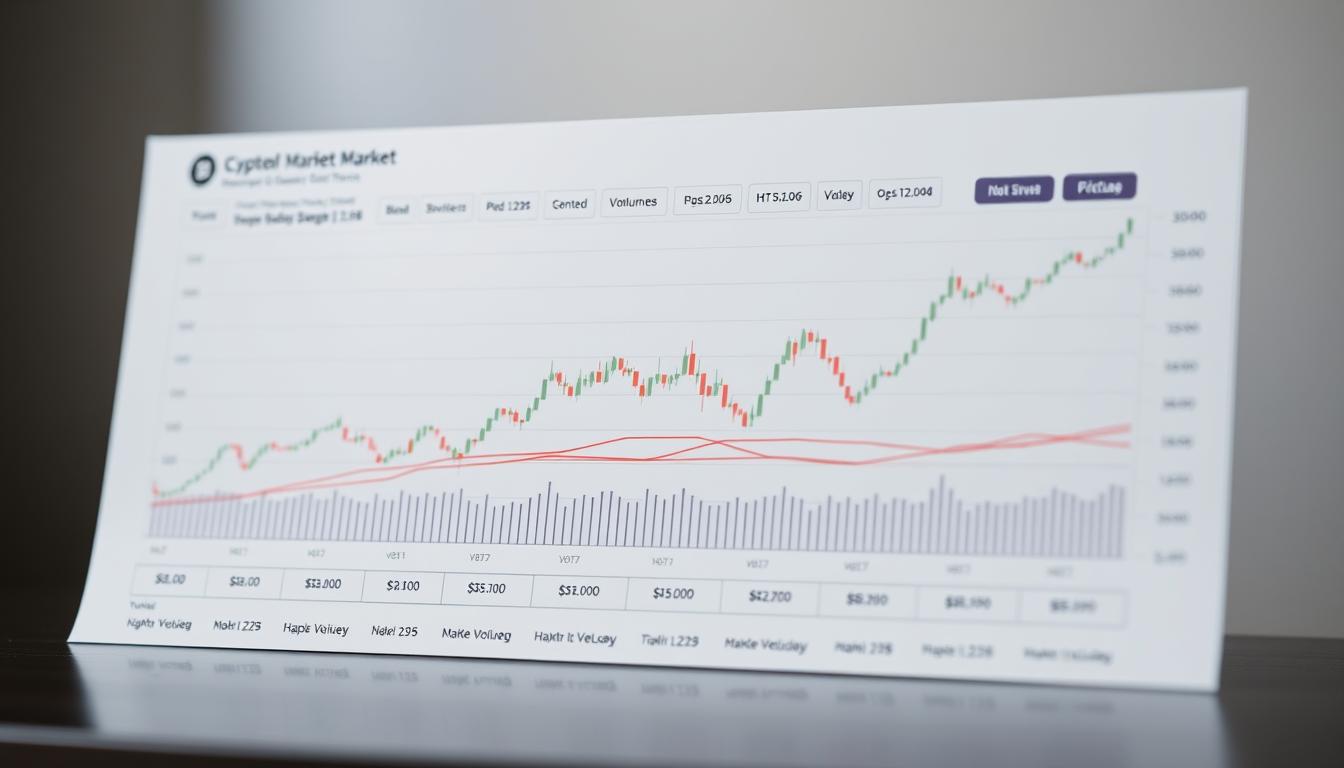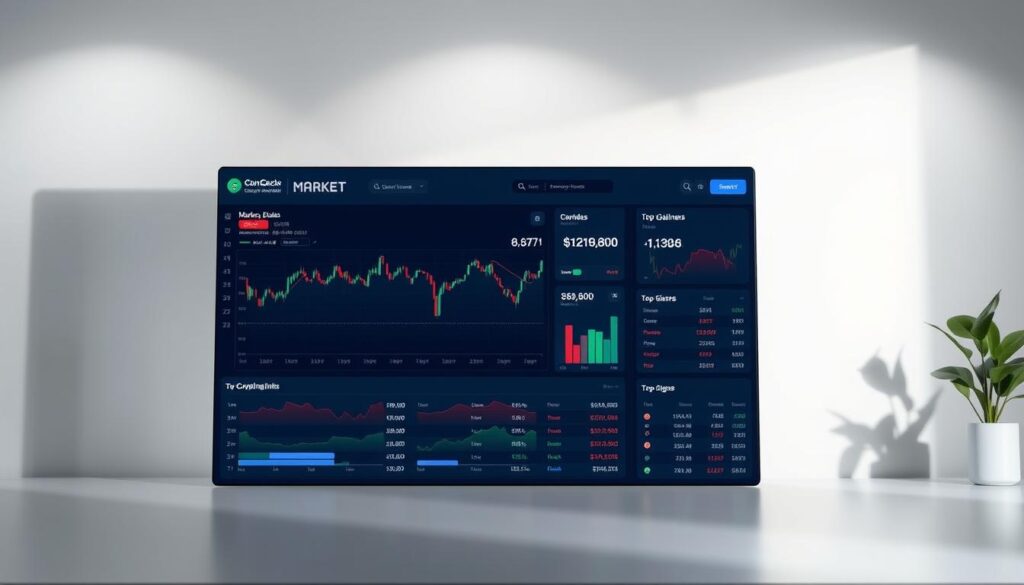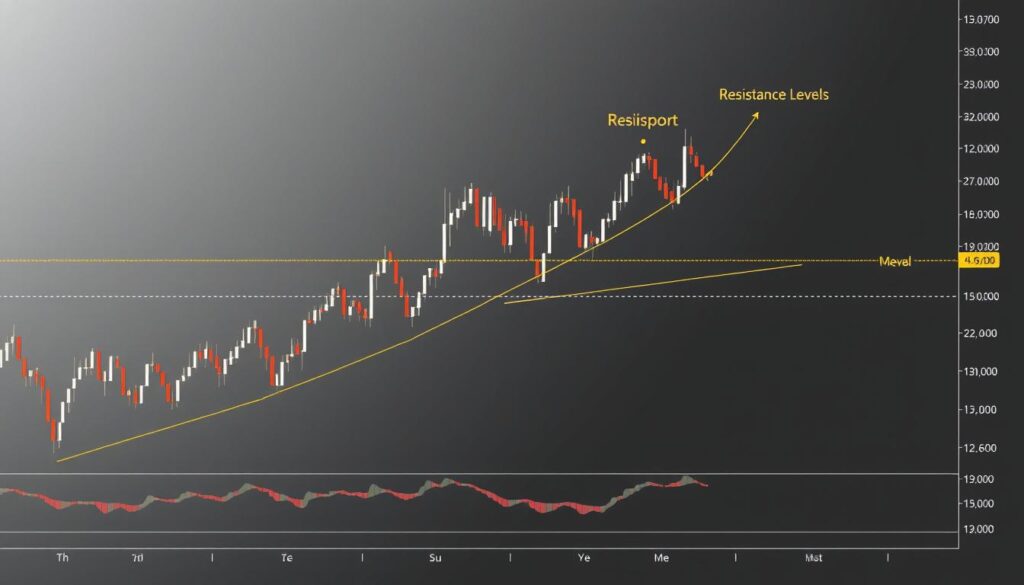Now Reading: Cryptocurrency market trends this week: Expert Analysis
- 01
Cryptocurrency market trends this week: Expert Analysis
Cryptocurrency market trends this week: Expert Analysis

Welcome to our expert breakdown of the digital asset landscape. This analysis dives deep into the most significant movements from the past 168 hours.
Our goal is to give traders and investors clear, actionable insights into the current market dynamics. The crypto space has seen incredible activity recently.
Today’s environment shows record trading volumes across major platforms. This points to growing interest from both large institutions and individual participants.
We see interesting patterns, especially between trading activity and asset prices. Decentralized exchanges present unique chances and challenges for those involved.
Major news from exchanges and blockchain networks has heavily influenced sentiment. Events range from large liquidations to renewed focus on specific technologies.
This report covers essential metrics like on-chain activity and volume surges. We also examine stablecoin use and new patterns shaping the future of this cryptocurrency sector.
Expert views highlight how recent shifts create both risk and opportunity. Some assets show strength, while others follow different paths. Understanding these market forces requires looking at multiple data points and technical signals.
Together, they create a full picture of where the crypto world stands right now.
Overview of the Current Crypto Market Landscape
Over the past 48-hour period, the digital currency space has witnessed fundamental shifts in trading behavior. Exceptional volatility and record-breaking volumes have reshaped investor expectations across the board.
A detailed analysis of recent data reveals a complex environment where traditional relationships are breaking down. Volume and price action no longer follow predictable patterns, especially within decentralized finance protocols.
The ecosystem shows a clear preference shift toward permissionless trading platforms. Decentralized exchanges continue gaining substantial ground against their centralized counterparts.
Multiple factors simultaneously influence asset valuations and trading patterns. Regulatory developments, technological upgrades, and macroeconomic conditions create a layered market environment.
Current cycle characteristics differ markedly from previous periods according to comprehensive analysis. Volume distribution, liquidity patterns, and investor behavior all show unique signatures.
The landscape demonstrates clear separation between established large-cap digital assets and emerging projects. Each category responds differently to stimuli while presenting distinct risk-reward profiles for participants.
Weekly On-Chain Activity and Volume Analysis
A comprehensive examination of on-chain metrics reveals $178 billion in weekly DEX volume, setting new records for 2024. This unprecedented activity level demonstrates robust participation across decentralized platforms.
According to DeFillama’s data, spot DEX volumes reached their highest point this year. The $178 billion weekly total represents sustained growth in permissionless infrastructure.
Highlights from Recent Volume Surges
The surge distributed across multiple blockchain networks and protocols. This pattern suggests broad-based adoption rather than concentration in specific ecosystems.
Both retail and institutional participants increasingly favor decentralized platforms for spot trading. The data shows consistent activity across consecutive sessions.
Implications of Yearly High Activity
Elevated on-chain trading creates enhanced liquidity conditions and tighter spreads. These improvements benefit price discovery mechanisms for digital assets.
Analysis of trading patterns reveals specific hours and day periods when activity peaks. This information provides valuable insights for optimal execution timing.
The sustained volume growth challenges previous assumptions about scalability limitations. Significant infrastructure improvements appear to be driving this structural change.
DEX Versus CEX Trading Dynamics
The balance of power between decentralized and centralized trading venues has undergone dramatic transformation. Historical patterns where centralized platforms dominated derivatives activity have reversed significantly.
Perpetuals volume ratios shifted from a traditional 10:1 advantage for centralized exchanges to just 1.9:1 recently. This represents one of the most substantial structural changes in digital asset infrastructure.
Comparative Analysis of Spot and Perps Trading
The launch of innovative protocols like Aster triggered what observers call “perp dex mania.” These designs captured substantial market share within hours of deployment.
Decentralized perpetual exchanges now offer competitive advantages in several key areas. Permissionless access and transparent liquidation mechanisms appeal to sophisticated participants.
| Feature | DEX Perpetuals | CEX Perpetuals | Advantage |
|---|---|---|---|
| Access Requirements | Permissionless | KYC Verification | DEX |
| Liquidation Transparency | Fully Visible | Opaque Mechanisms | DEX |
| DeFi Composability | Native Integration | Limited Connectivity | DEX |
| Historical Volume Share | Rapidly Growing | Declining Ratio | DEX |
Volume distribution data confirms this trend accelerates weekly rather than stabilizing. Each session brings decentralized perpetuals closer to parity across multiple blockchain networks.
The implications for price discovery efficiency and regulatory considerations are profound. This shift potentially reshapes how derivatives activity occurs in digital asset spaces moving forward.
Spot DEX and DEX Token Index Performance
Spot DEX activity reached unprecedented levels while governance tokens showed contrasting performance. DeFillama’s data confirms weekly volume hit $178 billion, marking a new yearly high.
This represents robust on-chain activity across decentralized platforms. However, the DEX Token Index containing AERO, UNI, RAY, VELO, and CAKE moved downward.
The divergence between protocol usage and token valuation challenges traditional value assumptions. Record trading volume over recent hours failed to translate into price appreciation.
Several factors may explain this disconnect:
- Competitive fee structures reducing protocol revenue
- Token emission schedules increasing supply pressure
- Shifting investor preferences away from governance tokens
The $178 billion weekly volume demonstrates extraordinary protocol utilization. Yet underlying tokens haven’t captured this growth in their market valuations.
Crypto participants must distinguish between protocol fundamentals and token performance. These elements can diverge significantly during rapid ecosystem evolution.
This situation presents both opportunity and warning. It could signal either market inefficiency or fundamental flaws in current tokenomics models.
In-Depth Analysis: Cryptocurrency market trends this week
The digital asset ecosystem currently presents an intriguing paradox where usage metrics and price performance diverge significantly. This separation between protocol activity and token valuation creates both challenges and opportunities for participants.
Several factors contribute to this unusual situation. Competitive fee structures may reduce protocol revenue despite high volume. Token emission schedules can create supply pressure that offsets usage growth.
Market Divergence Between Volume and Token Valuation
Investor perspectives on governance tokens appear to be evolving. Many participants now demand additional value beyond basic voting rights. Revenue sharing mechanisms and buyback programs gain importance in this environment.
The crypto space essentially tests whether trading volume alone justifies price appreciation. Some analysis suggests market share rotation rather than expansion drives recent activity.
This means protocols might cannibalize each other’s business instead of growing the overall pie. Such dynamics would naturally limit aggregate token valuations across the sector.
Understanding these Cryptocurrency market trends this week requires forward-looking indicators. Protocol development activity and competitive positioning offer clues about future correlations.
The current market situation presents a strategic decision point for investors. Either tokens represent compelling value opportunities, or fundamental changes in value accrual mechanisms are underway.
Centralized Exchange Activities and Liquidation Impacts
October’s market turbulence created unprecedented stress conditions for major trading venues. Centralized platforms processed extraordinary activity levels that tested their operational capabilities.

Weekly volume reached $2.7 trillion across spot and futures trading. This represents the highest activity since January 2025.
Record Volumes and Liquidations Overview
The liquidation event on October 10th resulted in approximately $19 billion in forced closures. This massive unwinding occurred during peak volatility hours.
Cascading liquidations triggered stop-loss orders and amplified price swings. The feedback loop between declining prices and additional liquidations created extreme conditions.
Exchange infrastructure faced significant pressure during these volatile sessions. Some platforms experienced delays while others maintained stability.
| Exchange Type | System Response | Liquidation Volume | Recovery Time |
|---|---|---|---|
| Major Global Platform | Minimal Disruption | $8.2B | Under 2 Hours |
| Regional Specialist | Temporary Outages | $4.1B | Over 6 Hours |
| Newer Entrant | Significant Delays | $2.9B | Multiple Sessions |
| Established Veteran | Stable Performance | $3.8B | Immediate |
The scale of liquidations indicates excessive leverage existed before the crash. Many participants held positions larger than their collateral could support.
This event likely leads to reduced leverage across the digital asset space. Exchanges may implement stricter margin requirements to prevent future cascades.
Stablecoin Volume and Dominance Trends
Stablecoin transaction levels have reached unprecedented heights, fundamentally reshaping how digital assets trade. Recent data shows centralized exchange volume approaching $7 trillion in Q3 2025.
This represents dramatic growth since early 2023. The volume surge establishes stablecoins as the primary medium for crypto trading activities.
USDT maintains remarkable dominance with over 60% market share. This persistence occurs despite regulatory scrutiny and competing USD-pegged alternatives.
The current elevated baseline indicates structural adoption rather than temporary speculation. Traders consistently prefer the most liquid stablecoin for seamless conversions.
| Stablecoin | Market Share | Q3 2025 Volume | Key Characteristic |
|---|---|---|---|
| USDT | >60% | $4.2T+ | Maximum Liquidity |
| USDC | ~22% | $1.5T | Regulatory Compliance |
| DAI | ~8% | $560B | Decentralized Backing |
| Other USD | Niche Applications |
Network effects reinforce USDT’s position across trading pairs. The recent Plasma mainnet beta launch presents a potential challenge to this dominance.
This specialized blockchain offers optimized infrastructure for USD-denominated transactions. Market trust clearly favors liquidity over reserve transparency concerns.
Major Exchange Events and Their Market Influence
Platform developments over recent months demonstrate how exchange activities shape the entire digital asset landscape. Trading venues now function as critical infrastructure influencing price discovery and investor behavior across the ecosystem.

The October 10th liquidation cascade exemplified this interconnected relationship. Multiple platforms experienced simultaneous pressure that overwhelmed available liquidity within hours.
Influence of Key Market Crashes and Recoveries
Exchange-specific news consistently generates immediate responses across the digital asset space. Listing announcements and regulatory developments trigger rapid price movements that reflect platform importance.
Recovery patterns reveal infrastructure resilience and trader confidence levels. Volume typically returns to normal within days or weeks depending on event severity.
| Exchange Category | Crash Impact Duration | Recovery Timeline | Market Share Change |
|---|---|---|---|
| Major Global Platforms | 2-4 Hours | Under 24 Hours | Minimal Shift |
| Regional Specialists | 6-12 Hours | 2-3 Days | Moderate Change |
| New Market Entrants | Multiple Sessions | 1-2 Weeks | Significant Loss |
| Established Veterans | Immediate | Same Session | Increased Dominance |
The industry depends heavily on a concentrated number of major exchanges. This creates systemic vulnerabilities where single-platform issues can trigger disproportionate impacts.
Competitive dynamics among trading venues determine where liquidity concentrates. Fee structures, product offerings, and geographic reach collectively shape how efficiently markets operate.
Utilizing CoinMarketCap API Data for Market Insights
Analytical tools like CoinMarketCap’s API provide essential historical data for informed digital asset decisions. The /v1/global-metrics/quotes/historical endpoint delivers comprehensive metrics spanning customizable time periods.
This data access supports detailed analysis of market cap fluctuations and Bitcoin dominance patterns. Understanding these metrics helps identify capital rotation between major assets.
Accessing Historical Crypto Metrics
The API enables retrieval of historical data using precise time parameters. Users specify start and end dates with Unix timestamps or ISO 8601 format.
Interval options include hourly, daily, weekly, and monthly data points. This flexibility supports various analytical requirements for studying asset behavior over time.
Bitcoin dominance metrics show BTC’s percentage of total market cap. These figures serve as key indicators for understanding bitcoin vs altcoin dominance patterns.
Understanding API Parameters and Conversions
Proper parameter configuration ensures efficient data retrieval. The conversion feature allows market cap denomination in multiple currencies simultaneously.
Users can request data in USD, EUR, BTC, or other reference assets. This supports international comparisons and multi-currency portfolio analysis.
| Parameter | Function | Example | Importance |
|---|---|---|---|
| time_start | Sets data retrieval start point | 2024-01-01T00:00:00Z | Defines analysis timeframe |
| interval | Specifies data point frequency | 1d (daily) | Controls data granularity |
| convert | Denominates values in currencies | USD,EUR,BTC | Enables multi-currency analysis |
| count | Limits returned data points | 100 intervals | Manages response size |
Subscription tiers determine historical data access duration. Plans range from one month to six years of available historical information.
Real-Time Data Insights from CoinGecko
Access to accurate, real-time data forms the foundation of successful participation in the digital asset ecosystem. CoinGecko delivers comprehensive price information aggregated from millions of markets across thousands of exchanges.

The platform collects data from both centralized platforms like Coinbase and decentralized protocols like Uniswap. Sophisticated algorithms filter anomalous tickers to ensure price accuracy.
CoinGecko provides essential metrics including market cap and fully diluted valuation. These figures help investors understand total project value beyond simple token price.
Real-time updates are crucial since crypto markets operate continuously without traditional hours. The platform’s verification process reduces exposure to scam projects through manual curation.
Users can compare individual cryptocurrency performance against Bitcoin and Ethereum benchmarks. This access supports everyone from casual investors to professional traders.
The service enables various applications requiring reliable data feeds. Market cap calculations help assess project scale while real-time information supports time-sensitive decisions.
Comparative Analysis Across Bitcoin, Ethereum, and Altcoins
Portfolio construction requires understanding how Bitcoin, Ethereum, and alternative coins differ fundamentally. These digital assets occupy distinct positions based on their valuation and risk characteristics.
Understanding Market Cap Differences
The digital currency space divides into three main categories by valuation. Large-cap cryptocurrency projects like Bitcoin and eth exceed $10 billion in market value. They offer higher liquidity and established track records.
Mid-cap options range between $1-10 billion with greater growth potential. Small-cap assets fall below $1 billion and represent newer, riskier ventures.
Bitcoin’s dominance stems from its first-mover status and digital gold perception. eth derives value from smart contract leadership and extensive developer activity.
This analysis reveals important patterns for investors. Large-cap assets typically provide stability during downturns. Smaller coins deliver higher returns in bull market conditions but suffer more during corrections.
Understanding these dynamics helps align investments with risk tolerance. Conservative strategies favor Bitcoin and eth, while aggressive approaches include smaller cryptocurrency positions.
Emerging Trends in Investor Behavior and Liquidity
Liquidity patterns over recent months demonstrate a clear preference for utility-driven crypto assets. Professional traders show increased sophistication in platform selection and capital allocation.

Capital flows within the crypto industry increasingly favor projects with sustainable tokenomics. Assets like XRP gain attention during selective altcoin rallies due to established use cases.
Institutional participation introduces longer time horizons and larger position sizes. This transformation affects price stability across major digital assets.
| Asset Category | Investor Preference | Liquidity Concentration | Risk Profile |
|---|---|---|---|
| Utility-Driven Projects | Strong Growth | High Concentration | Moderate Risk |
| Speculative Tokens | Declining Interest | Fragmented | High Risk |
| Established Assets (XRP etc.) | Rotating Interest | Stable | Medium Risk |
| Small-Cap Ventures | Limited | Very Fragmented | Very High Risk |
Traders demonstrate improved risk management during volatile periods. Tighter stop-losses and reduced leverage contribute to overall stability.
The industry matures beyond speculation toward utility-driven investment. Revenue generation and user adoption metrics gain importance for evaluation.
Technical Analysis: Price Movements and Forecasts
Chart formations and volume dynamics provide essential insights into potential future price directions for digital assets. Technical examination helps identify key support and resistance levels that influence trading decisions.
Chart Patterns and Trading Volume Interpretations
Recent sessions show classic patterns forming across major assets. Triangles and flags suggest consolidation phases that often precede significant moves.
Volume interpretation remains crucial for validating price changes. Advances with strong volume indicate sustainable trends. Weak volume movements often reverse quickly.
BTC frequently leads directional changes that affect other tokens. This relationship helps traders anticipate broader movements across the ecosystem.
| Technical Indicator | Primary Function | Timeframe Usage | Signal Strength |
|---|---|---|---|
| Moving Averages | Trend Identification | Multiple Day Periods | Medium |
| RSI (Relative Strength) | Overbought/Oversold | Intraday Hours | Strong |
| Volume Profile | Support/Resistance | Daily Analysis | High |
| VWAP | Execution Quality | Real-time Trading | Medium-High |
Traders use these tools to assess entry points in USD terms. The combination of pattern recognition and volume analysis creates robust forecasting models.
Current technical setups suggest potential breakout scenarios. However, external factors can quickly alter projected paths.
Research-Driven Market Performance Highlights
Sophisticated research methodologies uncover distinctive performance characteristics among major digital assets. The SOL/BTC pairing turned positive for the first time since January, gaining 23%.
This move reflects institutional accumulation patterns. Forward Industries purchased 6.8 million SOL tokens recently. Corporate treasury holdings now exceed 13 million SOL.
Comparative research across assets reveals divergent trajectories. Some tokens demonstrate strength while others lag behind. This creates opportunities for relative value strategies.
| Digital Asset | Recent Performance | Primary Driver | Time Horizon |
|---|---|---|---|
| SOL | +23% vs BTC | Institutional Accumulation | Multi-month |
| XRP | Selective Rallies | Regulatory Developments | Event-driven |
| Major BTC | Stable Baseline | Market Sentiment | Long-term |
| Established ETH | Moderate Growth | Developer Activity | Sustained |
Institutional-driven moves tend to sustain over longer periods. Retail speculation often reverses within weeks. The crypto market shows complex interactions between different participant groups.
Data from recent months indicates corporate treasury flows are increasingly influential. These patterns support multi-month uptrends independent of broader sentiment.
Conclusion
The digital asset landscape concludes this period at a pivotal crossroads. Record volumes and institutional capital flows create both opportunity and risk for all participants.
Analysis from recent months shows the crypto market maturing beyond speculation. Fundamental factors now drive price discovery alongside technical signals.
The future trajectory of major assets like bitcoin and eth depends on continued adoption. Regulatory news and technological advancements will shape coming months.
Today’s dynamics highlight the importance of disciplined risk management. The unprecedented volatility seen this period reinforces this need.
Looking ahead, monitor key indicators including btc stability and institutional participation. These factors will signal the market’s next directional move.
The future of this cryptocurrency space hinges on real-world utility growth. Successful navigation of challenges will support long-term appreciation.














